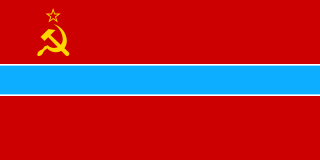
The Uzbek Soviet Socialist Republic, also known as Soviet Uzbekistan, the Uzbek SSR, UzSSR, or simply Uzbekistan and rarely Uzbekia, was a union republic of the Soviet Union. It was governed by the Uzbek branch of the Soviet Communist Party, the legal political party, from 1925 until 1990. From 1990 to 1991, it was a sovereign part of the Soviet Union with its own legislation.
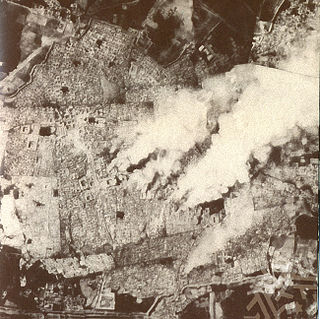
The Basmachi movement was an uprising against Russian Imperial and Soviet rule in Central Asia by rebel groups inspired by Islamic beliefs.

The Idel-Ural State, also known as the Volga-Ural State or Idel-Ural Republic, was an unsuccessful attempt of the autonomy of Tatar peoples that claimed to unite Tatars, Bashkirs, Volga Germans, and the Chuvash in the turmoil of the Russian Civil War. The republic was proclaimed on 1 March 1918, by a Congress of Muslims from Russia's interior and Siberia, but defeated by Bolsheviks the same month. Idel-Ural means "Volga-Ural" in the Tatar language.
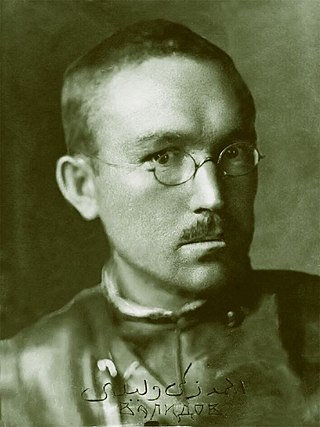
Zeki Velidi Togan, was a Bashkir historian, Turkologist, and leader of the Bashkir revolutionary and liberation movement, doctor of philosophy (1935), professor, honorary doctor of the University of Manchester (1967).

The Turkestan Autonomous Soviet Socialist Republic, originally called the Turkestan Socialist Federative Republic, was an autonomous republic of the Russian Soviet Federative Socialist Republic located in Soviet Central Asia. Uzbeks were the preeminent nation of Turkestan ASSR. Tashkent was the capital and largest city in the region.
Pro-independence movements in the Russian Civil War within the territory of the former Russian Empire sought the creation of independent and non-Bolshevik nation states after the October Revolution, therefore being in direct conflict with the Russian Soviet Republic which sought to conquer them. They were often supported politically or militarily by the Entente Powers. Some of them co-operated with the Russian White movement, but others were in conflict with it. Many pro-independence movements emerged after the dissolution of the Russian Empire and fought in the Russian Civil War.

The Bukhara operation (1920), was a military conflict fought between the Russian Soviet Federative Socialist Republic and the Young Bukharians against the Emirate of Bukhara. The war lasted between 28 August and 2 September 1920, ending in the defeat of the Bukhara Emirate, which was instead replaced by the RSFSR-controlled Bukharan People's Soviet Republic.
The Turkestan Front was a front of the Red Army during the Russian Civil War, which was formed on the territory of Turkestan Military District by Order of the Republic of Turkestan on February 23, 1919. It was formed a second time by the directive of the Commander-in-Chief on August 11, 1919 on the territory of Samara, Astrakhan, Orenburg Province and Ural region by renaming the Southern group of armies from the Eastern Front of the RSFSR. Its headquarters were in Samara and by 1920 the Turkestan Front counted some 114,000 soldiers.

The Bukharan People's Soviet Republic was a Soviet state that governed the former Emirate of Bukhara during the years immediately following the Russian Revolution. In 1924, its name was changed to the Bukharan Socialist Soviet Republic. After the redrawing of regional borders, its territory was assigned mostly to the Uzbek SSR and some to the Turkmen SSR.
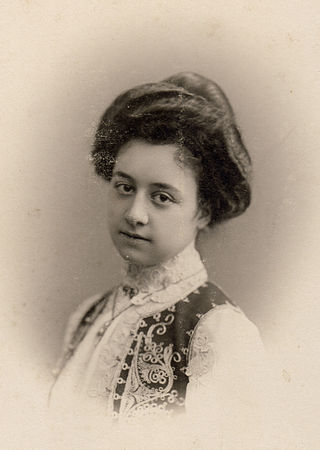
Amina Hanum Syrtlanoff or Syrtlanova — public figure, sister of mercy, theosophist, mason.
The Bashkir Rebellion from 1704 to 1711 was one of the longest in the series of Bashkir rebellions in the 17th and 18th centuries in the Russian Empire. The Bashkir uprisings of 1662–1664, 1681–1684, and 1704-1711 have been treated at length by Soviet and post-Soviet historians as evidence of Bashkiria's gradual incorporation into the empire and of Bashkir resistance to colonial oppression.

Torokul Dzhanuzakov was a Kyrgyz Soviet politician; the deputy chairman of the Central Executive Committee of the Turkestan Autonomous Soviet Socialist Republic, chairman of the Commission for Refugees in 1916, one of the main organizers and leaders of the pan-Turk movement in Turkestan, and a member of the secret Turkestan National Union (TMB) political organization.
The Bukharan Revolution refers to the events of 1917–1925, which led to the elimination of the Emirate of Bukhara in 1920, the formation of the Bukharan People's Soviet Republic, the intervention of the Red Army, the mass armed resistance of the population, suppression of Basmachi, the inclusion of Bukhara People’s Soviet Republic into the Soviet Union on September 19, 1924, as a separate union republic, the elimination of the newly established republic as a result of national disengagement and the formation of the Uzbek SSR, the Turkmen SSR and Tajik ASSR in 1924.
Shagit Hudayberdin was a Bashkir revolutionary active in the Russian Revolution. From 23 November 1921 to March 1922 he was the Responsible Secretary of the Bashkir Regional Committee of the All-Union Communist Party (Bolsheviks).
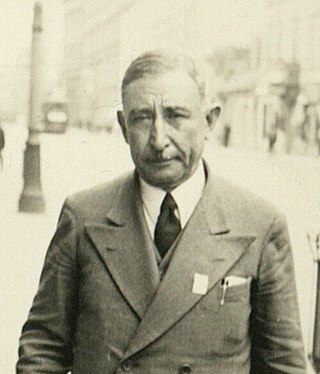
Osman Kocaoğlu was the first president of the former Bukharan People's Soviet Republic. Although his name was romanized as Polat Usman Khodzhayev in Russian, he spent most of his life in Turkey and Osman Kocaoğlu is the name he assumed in Turkey.
The Kolesov's Campaign was an unsuccessful attempt to seize power in the Bukhara Emirate by the Russian Bolsheviks and Young Bukharians during the Civil War in Russia.
Isidor Yevstigneyevich Lyubimov was a Russian revolutionary and Soviet politician. Lyubimov was Mikhail Frunze's closest associate during the Russian Revolution and Civil War.

Bashkiria, also called Bashkortostan, Bashkurdistan, Lesser Bashkiria, or Autonomous Bashkiria, was a short-lived autonomous state which existed from 1917 to 1919, during the Russian Civil War. Aligned with the Russian State, Bashkiria was attacked and later annexed by the Russian Soviet Federative Socialist Republic, leading to its 1919 collapse and succession by the Bashkir Autonomous Soviet Socialist Republic.










